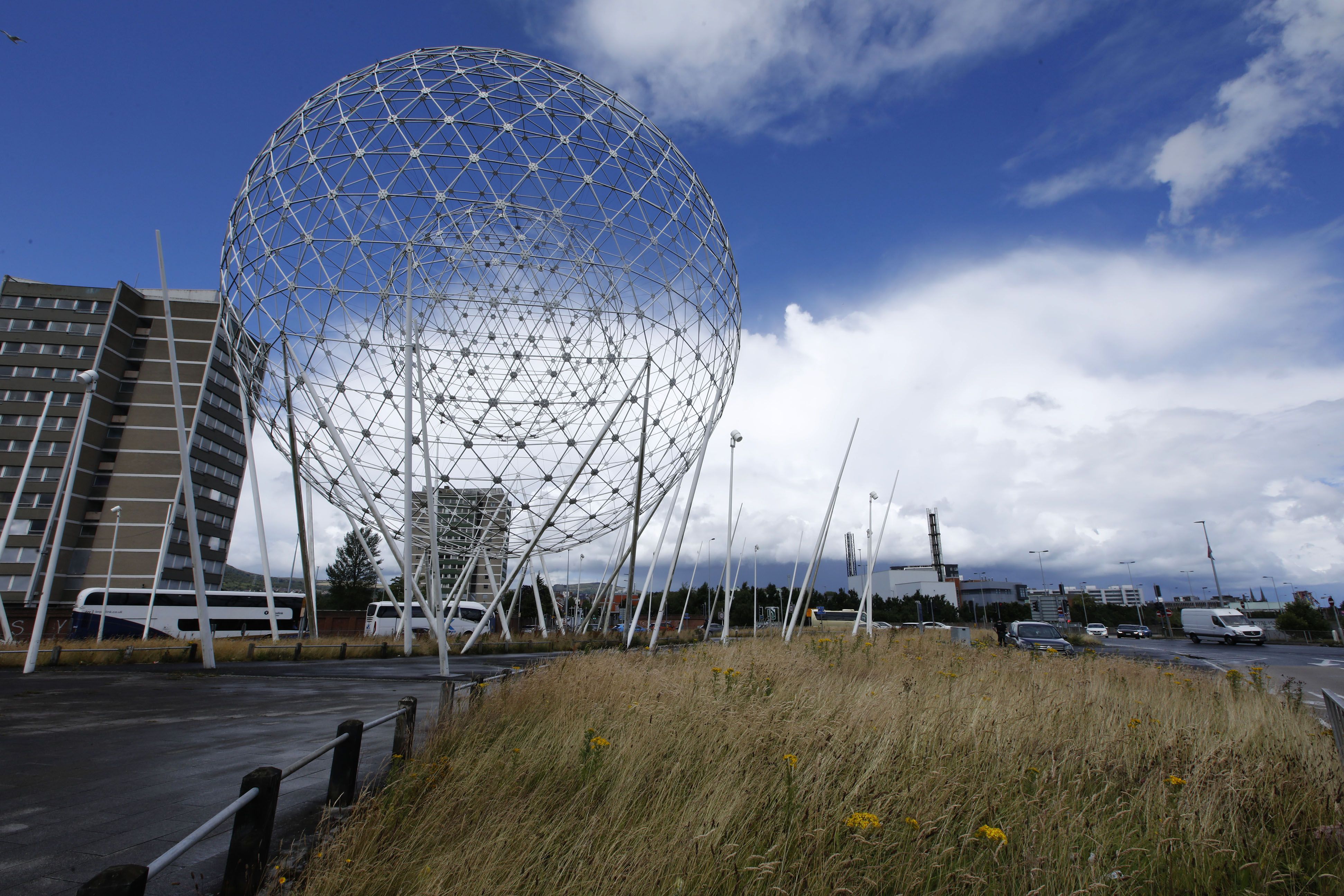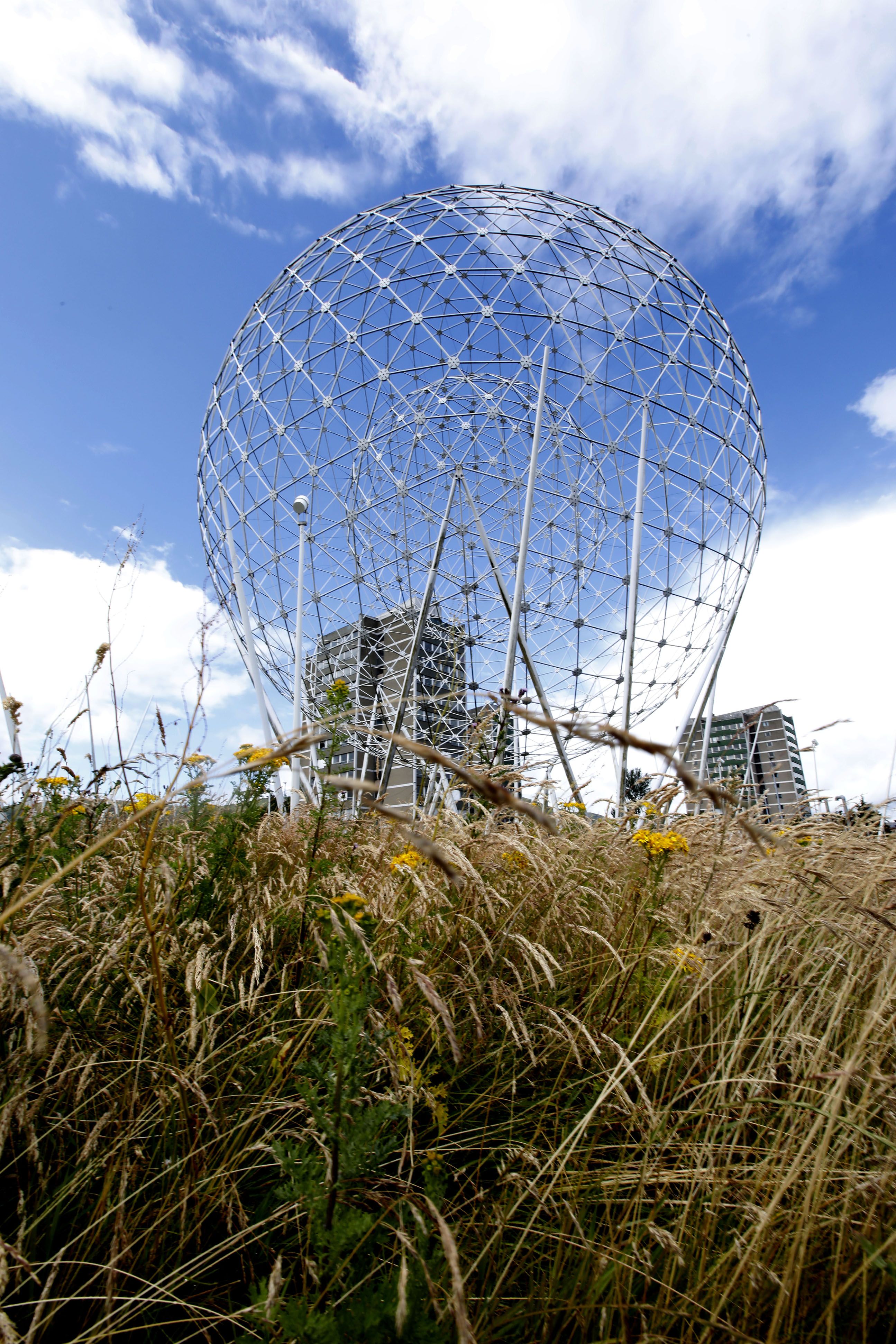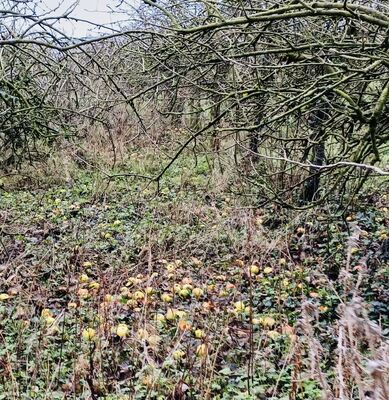IT’S just great – grass as thick as a sheep’s coat right in the centre of one of Belfast’s busiest junctions.
And of course it’s not just grass, the vegetation which has been allowed to grow under the famous Balls on the Falls is thick with wildflowers.
Some commuters might think it’s a bit unkempt and untidy, that the authorities have run out of money or the grass cutters are out on strike. But it’s a deliberate policy of the Department for Infrastructure – which manages road verges – to boost wildlife. It was introduced by then Infrastructure Minister John O’Dowd almost two years ago but it’s only really now with summer reaching its peak that we’re seeing its effect all around us. And nowhere more prominently than at the Balls on the Falls.
Rather than regularly mowing the grass to turn it into something that we have somehow come to think as attractive – a uniform green lawn like on a golf course – it will now be cut just twice a year. A bit like Dúlra’s hair!
Oh, sure – you’ll get some people muttering that the whole country has gone to rot, but that’s just a mindset that we all will have to change. We’ve all been conditioned to believe that a sterile environment is pretty when in fact it will ultimately damage our health. We are part of an ecosystem that we seem determined to destroy and it’s that narrow grass verge at the side of every road that could put us, literally, back in the right direction. Even back to a time when car windscreens were covered in dead insects.
The verges are a start and if we embrace that small change, then many other areas – parks and hilltops – can be rewilded.
Of course, most motorists are passing by so fast that they don’t catch sight of the myriad of wildflowers growing on the verges.
Under the Balls on the Falls this week, there was a rainbow of colours from tiny flowers: bugle and vetch, clover and trefoil. Dúlra kept his eye out for any orchids, the elites of the flower world – but although he didn’t see any, he’s no doubt their seeds will still be in the ground, lying dormant for decades or having been blown there.
When Trinity College let the grass grow outside their main gate in Dublin last year, one of the university’s botanists was flabbergasted to discover a broad-leaved helleborine orchid, one of Ireland’s rarest, growing among the dandelions and buttercups. Who knows what lies beneath the Balls on the Falls? A few months of growth has produced long grass and tall flowers. In fact, it’s the type of habitat that would even attract ground-nesting birds. Wouldn’t it be great to have meadow pipits and the famous song of the skylark in such an urban setting?

Wildflowers are the life support of our wildlife. They attract bees and butterflies and even grasshoppers which in turn set in chain the cycle of life. And as our countryside around Belfast gets bent even more to our will, contributing to the collapse of the Lough Neagh ecosystem, verges can be a last refuge for wildlife.
It’s a great initiative by Stormont, although it’s a bit ironic considering the massive manicured lawn up there at the House on the Hill. It’s used as a backdrop by reporters from around the world reporting from Parliament Buildings, but wouldn’t it be great if it were bursting with a multitude of multicoloured native wildlfowers?
Of course some verges at dangerous junctions must be cut for safety reasons. But safety is often used as an excuse to obliterate wildlife. Now the Roads Division says its grass-cutting policy “has evolved to focus on protecting wildlife and promoting biodiversity while managing roadside verges”. Even roundabouts are being allowed to blossom.
If we keep it up, we might just have to start cleaning those windscreens again!
* Reader Michael Doherty remembers the eviction of yet another pair of swifts a few years back in the Trench Park area of West Belfast. They had nested in a wee cavity in the gable of a house, but when repairs were carried out the cavity was filled in.
“When they returned from migration, they actually hung on to the wall where the hole had been as if they couldn’t understand what had happened,” he told Dúlra.
These brilliant birds are losing breeding spots all over Belfast as buildings are replaced and repaired, but thankfully there’s at least one pair still nesting in the area. It’s time Belfast City Council mandated that every new building should have swift bricks installed as they are constructed – that way we could easily turn Belfast into swift city.
• If you’ve seen or photographed anything interesting, or have any nature questions, you can text Dúlra on 07801 414804.






